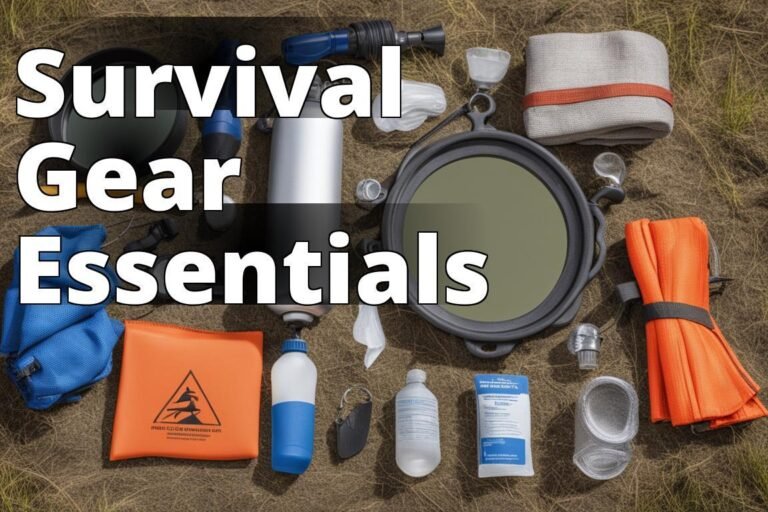Top 7 Hiking Trails on East coast 2024
Is your idea of fun sitting in a stuffy office, backside glued to a flat-bottomed back-breaking chair, eye-twitching with every new email hitting your inbox? Let me counteroffer with some of the best hiking trails on the east coast mother nature has to offer. The great outdoors with panoramic views, clean air infused with the scent of pine, and adventure beckoning you at every split in the trail.
Whether you’re a seasoned hiker, backpacker, trail runner, or just someone looking to escape the monotonous hum of air conditioners, these trails are your ticket to outdoor bliss. Get ready to swap your keyboard clicks for the sounds of nature!
1. Connetquot River State Park Preserve, NY

Connetquot River State Park Preserve: where nature lovers go to remember what trees look like.
A hidden gem on Long Island, New York. This 3,473-acre oasis is a breath of fresh, non-subway-tunnel air for anyone looking to escape the concrete jungle. It’s a place where you can fish without hearing a single car horn, thanks to the park’s dedication to preserving the South Shore’s largest remaining river ecosystem. Equestrian enthusiasts will be sure to enjoy the horse friendly riding trails, because why walk when you can gallivant majestically?
With 50+ miles of hiking trails you are sure to walk more steps than your fitness tracker can handle. Birdwatchers, bring your binoculars, because with over 200 species, you’ll feel like you’re in a live-action Angry Birds game.
Connetquot River State Park Preserve is a truly remarkable destination that should not be missed. With breathtaking natural landscapes, diverse wildlife, and well-maintained trails, it offers an unforgettable experience. Whether you enjoy hiking, bird-watching, or simply immersing yourself in the tranquility of nature, this park has something for everyone. Plan a visit to Connetquot River State Park Preserve and prepare to be amazed by its beauty and serenity.
Fees
- Vehicle Entrance Fee
- Cars $8 Fee Collected
- Bus Vehicle Entrance Fee:
- Non-Profit Buses (By permit only) $35
Commercial Buses (By permit only) $75
- Non-Profit Buses (By permit only) $35
- Environmental Interpretive Programs
- $4 per adult
$4 per child (3-17 yrs.)
- $4 per adult
- Fly Fishing
- $25 per 4 hour session
- Fly Fishing: Group Outing Program:
- $25 per person (4hr session)
- Horseback Riding
- $50 yearly permit & $10 day riding permit
- House Tours
- $4 per adult
$4 per child
- $4 per adult
Best Time to Visit
- Spring in the preserve is like nature’s own makeover show, with flowers blooming faster than contestants on a reality TV series. The trees get their leaves back, the birds are practically tweeting like social media influencers, and the river… well, it’s still a river, but an exceptionally pretty one.
- Summer here is like attending a woodland retreat without the hefty price tag. The trails are your treadmill, the sun-dappled paths offer more Vitamin D than any supplement, and let’s not forget, the trees provide better shade than any overpriced beach umbrella.
- Fall, when the preserve turns into an Instagrammer’s paradise. The leaves change colors faster than the latest fashion trends, and the crisp air is a refreshing change from summer’s sauna-like conditions. It’s the perfect time for those who like their walks with a side of stunning foliage.
- Winter, the quiet achiever, transforms the park into a serene, snow-covered wonderland, ideal for those who find beauty in bare trees and frozen landscapes. It’s peaceful, sure, but remember, it’s also cold – so bundle up like you’re preparing for a polar expedition. Each season brings its own unique charm, making Connetquot River State Park Preserve a year-round destination for those who fancy nature’s diverse portfolio.
Essential Gear
Standard hiking equipment such as a day pack with trekking poles for those enjoying a scenic outing for the day would suffice. This park has also has trails for those winter enthusiasts visiting in winter and with excellent opportunities for utilizing those cross-country skis.
Common Dangers
Connetquot River State Park Preserve in NY poses several common dangers found in most parks. From venomous snakes slithering through the underbrush to slippery trails leading to potential falls, hikers should exercise caution. Additionally, the park’s dense vegetation can obscure visibility, increasing the risk of getting lost.
2. Adirondack, NY

Adirondack Park was officially established in 1892 in eastern upstate New York and is among the earliest Forever Wild Forest Preserves in the country. It holds the distinction of being a unique wilderness area and National Historic Landmark.
Spanning an impressive 6 million acres, it is the largest publicly protected region in the contiguous United States. The state of New York claims ownership of approximately 2.6 million acres, while the remaining 3.4 million acres serve purposes such as forestry, agriculture, and open space recreation.
It’s important to note that the Adirondack Park is neither a National Park, requiring no entrance fees or nighttime closure, nor a state park, contrary to common misconceptions.
Fees
As of January 2024 there are no fee’s to enter this park
Park Type
Wild Forest Preserve. Publicly Protected.
Best Time to Visit
- Spring: Spring in Adirondack Park is a refreshing season of renewal. It’s an ideal time for witnessing waterfalls in full flow and observing the awakening of local wildlife.
- Summer: Summer offers the warmth and sunshine perfect for exploring the park’s extensive hiking trails and indulging in water sports on its numerous lakes.
- Fall: Autumn in Adirondack is a spectacular display of vibrant foliage. The cooler temperatures and stunning views make it a favorite for hikers and photographers alike.
- Winter: Winter transforms the park into a serene, snowy wonderland, ideal for skiing, snowshoeing, and enjoying the quiet beauty of the snow-covered landscape.
Essential Gear
- Sturdy Hiking Boots: Essential for navigating varied terrain.
- Weather-Appropriate Clothing: Layering is key due to changing weather conditions.
- Waterproof Jacket: Important for unpredictable weather.
- Backpack: For carrying essentials like water, snacks, and a first-aid kit.
- Map and Compass/GPS: For navigation, especially in remote areas.
- Insect Repellent: To protect against bugs, particularly in warmer months.
- Sun Protection: Sunglasses, sunscreen, and a hat are important year-round.
- Water Bottle or Hydration System: To stay hydrated on the trails.
- Headlamp or Flashlight: Useful for early morning or late evening adventures.
Common Dangers
The Adirondack Park in New York is simply teeming with excitement and danger. From treacherous trails that offer breathtaking views to encounters with elusive wildlife, this park is a thrill seeker’s paradise. Soaring cliffs, unpredictable weather, and the occasional black bear sighting will keep you on your toes.
FAQ
For a list of frequently asked questions about this park click here.
3. Devil’s Path, NY
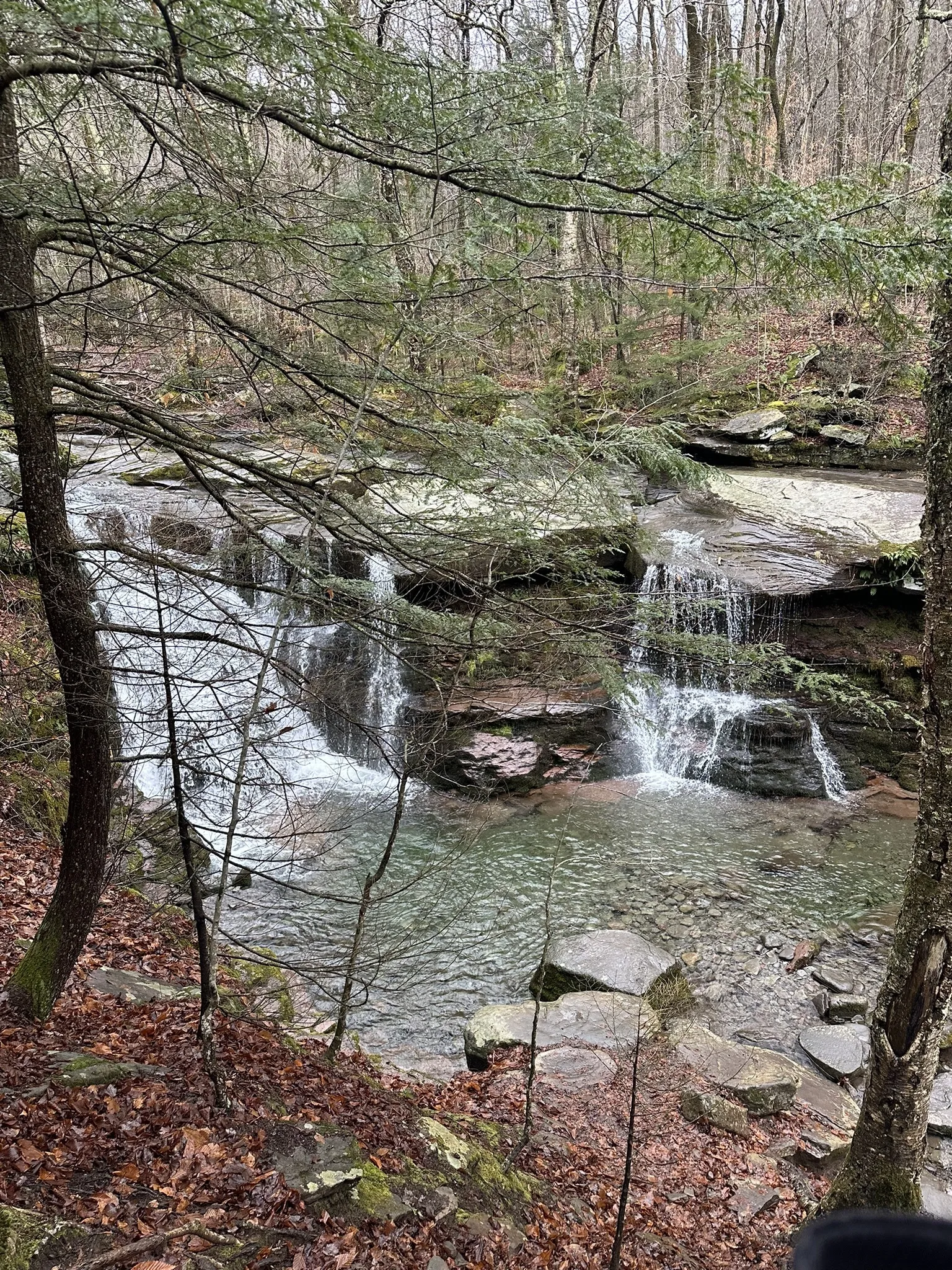
The Devil’s Path, nestled in the majestic Catskill Mountains of New York, is an absolute delight for adventure seekers. With its treacherous terrain and heart-pounding ascents, this trail promises an exhilarating experience that will leave you breathless, both literally and figuratively. Boasting stunning views and a touch of danger, it’s no wonder that thrill-seekers flock to this devilishly challenging path. So lace up your boots and prepare for an unforgettable journey along the Devil’s Path.
Set against the backdrop of the Catskill Mountains’ stunning natural beauty, each step is a testament to heart and sheer stubbornness of those who accept the challenge. While Devil’s Path may not be the idyllic choice for those seeking a leisurely nature walk, it will undoubtedly provide an exhilarating and rewarding experience for those eager to embrace the ruggedness of this legendary trail.
Fees
- Private Vehicle Pass: This pass covers all passengers in a single, private, non-commercial vehicle and is valid for 7 days.
- Motorcycle Pass: This is for one or two passengers on a private, non-commercial motorcycle, also valid for 7 days.
- Individual Pass: For a person entering by foot, bicycle, park shuttle bus, or boat. This also is valid for 7 days.
- Acadia Annual Pass: Good for 12 months from the date of purchase, this pass covers the pass owner and passengers in a single, private, non-commercial vehicle.
Best Time to Visit
- Spring: Witness nature’s rebirth with blooming flowers , birds singing, and where the sun occasionally graces you with its presence. Get ready for a free, all-natural mud spa treatment for your boots and possibly your face if you’re not careful. The trails are so generously soggy, you might consider bringing a canoe.
- Summer: Bask in the warm embrace of the sun as lush greenery surrounds you in a picturesque landscape.
- Fall: The mountains are clad in a breathtaking tapestry of red, orange, and yellow. It’s nature’s own fashion show. Enjoy the symphony of crunchy leaves underfoot. But beware, they’re also nature’s little tricksters hiding slippery rocks and roots that love to test your balance.
- Winter: The mountains transform into a serene, snowy wonderland, offering a picturesque winter escape. Pack your snowshoes or skis, and don’t forget to layer up! It’s an idyllic icy wonderland where you can enjoy the thrill of becoming a temporary ice sculpture and question your life choices as you trudge through the snow.
Essential Gear
- Sturdy Hiking Boots: Essential for navigating varied terrain.
- Weather-Appropriate Clothing: Layering is key due to changing weather conditions.
- Waterproof Jacket: Important for unpredictable weather.
- Backpack: For carrying essentials like water, snacks, and a first-aid kit.
- Map and Compass/GPS: For navigation, especially in remote areas.
- Insect Repellent: To protect against bugs, particularly in warmer months.
- Sun Protection: Sunglasses, sunscreen, and a hat are important year-round.
- Water Bottle or Hydration System: To stay hydrated on the trails.
- Headlamp or Flashlight: Useful for early morning or late evening adventures.
Common Dangers
Devil’s Path is known for it’s rigorous terrain and challenging natural obstacles. Appropriately named for its features, Devil’s Path offers an experience that tests the resilience and endurance of even the most seasoned hikers. Littered with steep inclines and a rugged landscape, the trail presents a continuous interplay of elevation and rocky terrain.
4. Acadia National Park, ME
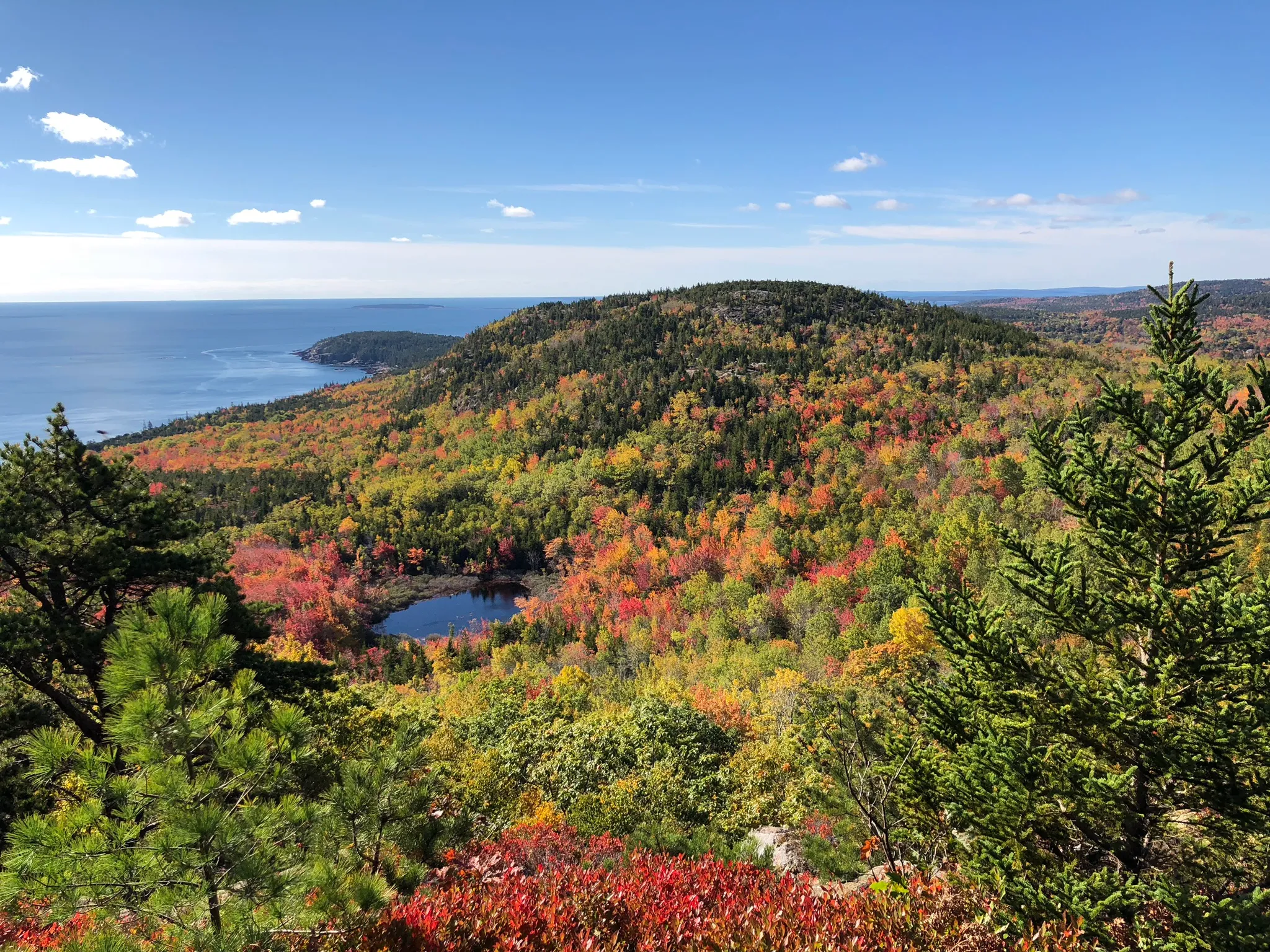
Welcome to Acadia National Park, where the wildlife is as diverse as the tourists’ choice in hiking attire. You might see majestic moose wandering with an air of indifference to your presence. Then there are the black bears, who, unlike some visitors, actually understand the concept of ‘leave no trace’. Let’s not forget the white-tailed deer, so graceful, so serene, they’re like the park’s own brand of natural Xanax. And for the bird enthusiasts, peregrine falcons soaring high – because what’s a park without its own air show? Just remember, while selfies with wildlife are discouraged, your bragging rights are not. Happy spotting!
Fees
There are entrance fees for Acadia National Park in Maine. These fees vary depending on the type of pass you purchase. As of April 2023, the fee structure is typically as follows:
- Private Vehicle Pass: This pass covers all passengers in a single, private, non-commercial vehicle and is valid for 7 days.
- Motorcycle Pass: This is for one or two passengers on a private, non-commercial motorcycle, also valid for 7 days.
- Individual Pass: For a person entering by foot, bicycle, park shuttle bus, or boat. This also is valid for 7 days.
- Acadia Annual Pass: Good for 12 months from the date of purchase, this pass covers the pass owner and passengers in a single, private, non-commercial vehicle.
Best Time to Visit
- Spring is a wild card, often soggy and muddy, perfect for those who find unpredictable transitions and fewer crowds strangely appealing.
- Summer, with its pleasantly warm days, is the park’s prime time, drawing crowds who apparently love sharing their personal space with a few thousand closest friends.
- Fall is the perfect time for those of us that prefer solitude with a chance of crisp air, offering a spectacular leaf-peeping show, where the trees put on more colors than a tie-dye convention.
- Winter is for the brave and the bold (or the slightly unhinged), with snowshoeing and cross-country skiing for those who think freezing temperatures add to the charm.
Essential Gear
Sturdy hiking boots are a must for navigating the park’s diverse trails, while layered clothing accommodates its unpredictable weather. A waterproof jacket is critical for sudden rain, and insect repellent is necessary to ward off persistent mosquitoes. Always carry a hydration pack or water bottle, and for those early morning or late evening treks, a reliable headlamp is invaluable. Even in the age of GPS, a traditional map and compass are recommended for dependable navigation. Tree’s rarely give good direction.
Common Dangers
With over 158 miles of hiking trails, park’s climate changes faster than fashion trends in New York City. One minute you’re basking in sunshine, the next you’re in a fog thicker than pea soup, making visibility as clear as mud.
Acadia isn’t just about testing your weather prediction skills. It’s a rendezvous with wildlife you don’t typically meet at your local zoo. We’re talking about black bears that might be as curious about you as you are about them, and coyotes that won’t be singing with you around the campfire. Oh, and those cute harbor seals? They’re not looking to share their lunch. Ticks, black flies, and the brown-tailed moth are ready to give you a not-so-warm welcome, so prepare to do the ‘tick check dance’ after your hike.
The beaches and tides along the coast of Acadia National Park present unique dangers. One notable incident occurred on August 23, 2009, when a large wave, heightened by the conditions of Hurricane Bill, swept over a crowd near the coast on Ocean Drive. This tragic event resulted in seven people being swept into the ocean and several injuries. Among those affected, a 7-year-old girl sadly did not survive. This incident underscores the importance of exercising extreme caution along the park’s rocky coastline, especially during high surf conditions and storms.
For a detailed understanding of what to expect, check out the safety information provided by Acadia National Park and Hikers Daily.
5. Fires Creek Rim Trail, NC
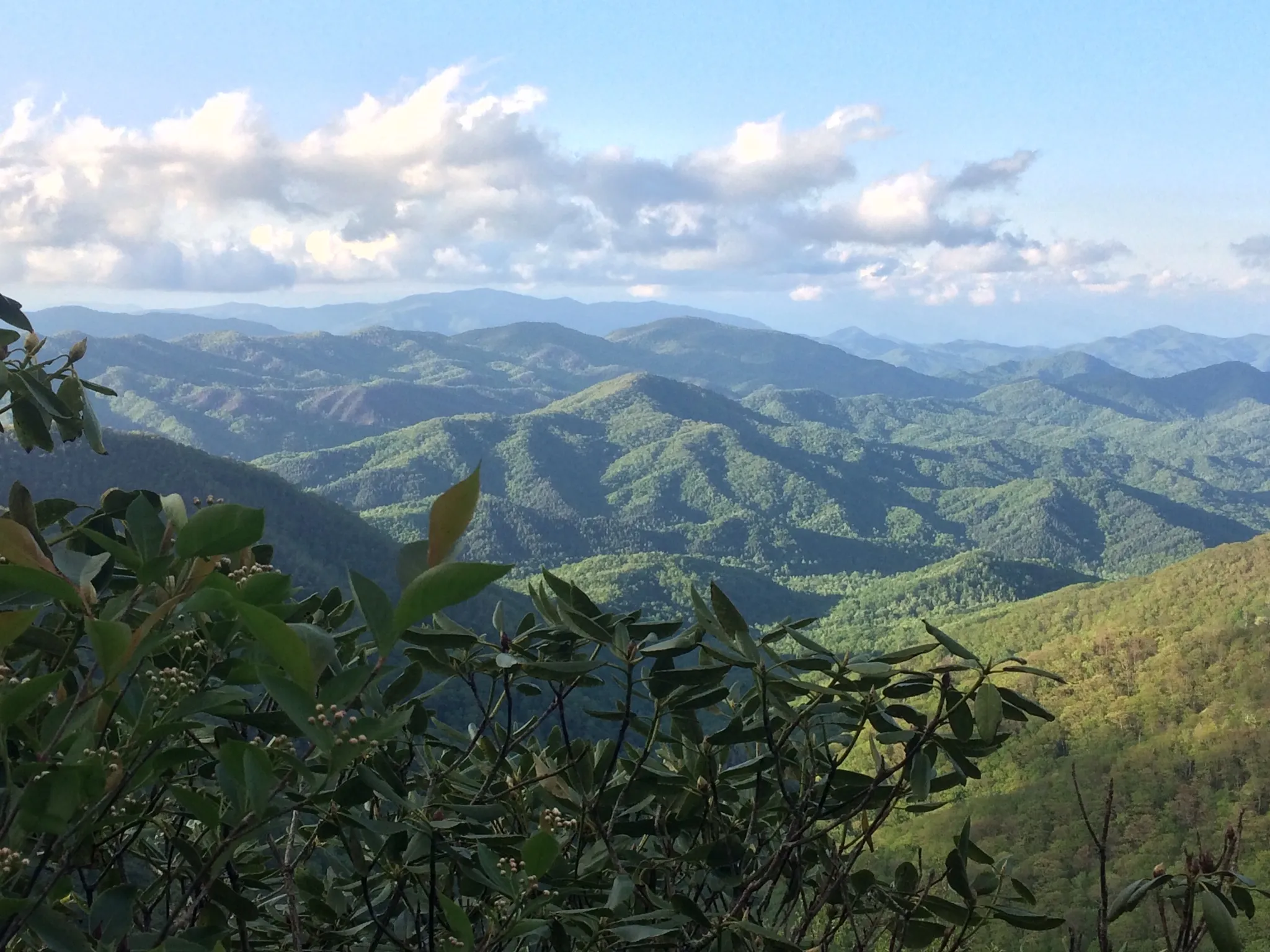
Welcome to Fires Creek Rim Trail in North Carolina, a hidden gem where the wildlife is as unbothered by your presence as a cat in a sunbeam. Here, you might spot white-tailed deer, seemingly auditioning for a Disney movie with their elegant prancing. The black bears, though, are like introverts at a party – they’d rather not have the company. Birdwatchers, get your binoculars ready for a variety of feathered friends, because who needs Twitter when you have actual birds chirping? And let’s not forget the squirrels, the unofficial park mascots, always busy and overly dramatic. Featuring a majestic 25-mile loop trail crossing beautiful mountains and valleys you’re sure to find beauty in behind every bend in the trail so tread lightly and enjoy the show!
Fees:
Currently there are no fees for entrance to this trail.
Best Time to Visit:
- Spring: Spring in Fires Creek is like walking through a cloud of pollen – perfect for those who feel their day isn’t complete without a good sneeze fest. Thanks to the spring rains, every hike is a ‘choose your own adventure’ with spontaneous creek crossings. Who needs bridges when you have the thrill of unpredictability?
- Summer: Experience the natural sauna that is summer hiking here. It’s the perfect opportunity to test the limits of human sweat. Enjoy the endless serenades by our local cicadas and birds. It’s like nature’s own Spotify playlist, on repeat, all day long.
- Fall: Witness an explosion of color that’s Instagram-worthy, if you can keep your phone dry from the occasional fall shower. With all the fallen leaves, the trail becomes a fun game of ‘find the path’. It’s like nature’s way of saying, “Good luck, hikers!”
- Winter: See Fires Creek dressed in its winter best. The snowy scenery is great for those who enjoy their nature views with a side of frostbite. The trails become slick ice rinks, providing free lessons in balance and poise. Who knew hiking could double as a crash course in ice skating!
Essential Gear:
- Sturdy Hiking Boots: Ensure they have good grip and ankle support, especially important for navigating uneven and potentially slippery terrain.
- Weather-Appropriate Clothing: Pack layers including moisture-wicking fabrics, a warm jacket, and rain gear. The weather can change quickly, so be prepared for everything.
- Backpack: A comfortable, durable backpack to carry all your essentials.
- Hydration System: Water bottles or a hydration bladder. Staying hydrated is key, especially in the warmer months.
- Nutritious Snacks and Food: Energy bars, trail mix, and sandwiches will keep your energy levels up during the hike.
- Navigation Tools: A map of the trail and a compass or GPS device. Cell service can be unreliable, so traditional navigation tools are essential.
- First Aid Kit: Include basic supplies like bandages, antiseptic wipes, blister pads, and any personal medications.
- Headlamp or Flashlight: With extra batteries, in case you’re out longer than planned.
- Insect Repellent: Particularly during the summer to ward off mosquitoes and ticks.
- Sun Protection: Sunscreen, sunglasses, and a hat to protect against sun exposure.
- Trekking Poles: Helpful for stability and support, especially on uneven terrain or during stream crossings.
- Emergency Whistle and/or Personal Locator Beacon: For safety in case of an emergency.
- Multi-tool or Knife: Always handy for various situations.
- Camera or Smartphone: For capturing the stunning scenery (but don’t rely on your phone for navigation).
- Trash Bag: Practice Leave No Trace principles by packing out all your trash.
Common Dangers:
Fires Creek Rim Trail in North Carolina, the ultimate hiker’s paradise, if your idea of paradise includes a few ‘fun’ surprises along the way. Terrain can be full of surprises with random slip ‘n slide and slopes that transform into nature’s own slipperiness post-rain. It’s like Mother Nature’s way of testing your balance – and your waterproof gear.
Then, there’s the local wildlife. Want to feel like you’re in a real-life game of Where’s Waldo? Try spotting black bears (Ursus americanus) from a safe distance, of course. According to the North Carolina Wildlife Resources Commission, these fluffy fellows are generally shy, but who doesn’t enjoy a bit of bear-themed adrenaline? And let’s not forget the slithery delights of copperheads (Agkistrodon contortrix) and timber rattlesnakes (Crotalus horridus). Remember, it’s not just the leaves rustling underfoot in those woods. Awareness of not just where your going but where you’re stepping is essential unless your itching for a spa day at the local hospital and some of the best anti-venom cocktails they have to offer.
The weather in this region is known for it’s bi-polar, crazy ex vibes, and who doesn’t love a quick change of plans? The area is known for its own brand of meteorological mood swings, making each hiking trip a ‘surprise me’ event. It’s always a good idea to check the forecast, but hey, why spoil the surprise?
All in all, if you’re up for a mix of slippery treks, surprise wildlife encounters, and a weather lottery, Fires Creek Rim Trail is your go-to destination. Just pack your sense of adventure (and maybe a first-aid kit), and you’re all set for a hike that’s anything but ordinary!
6. Bearfence Mountain Trail, VA
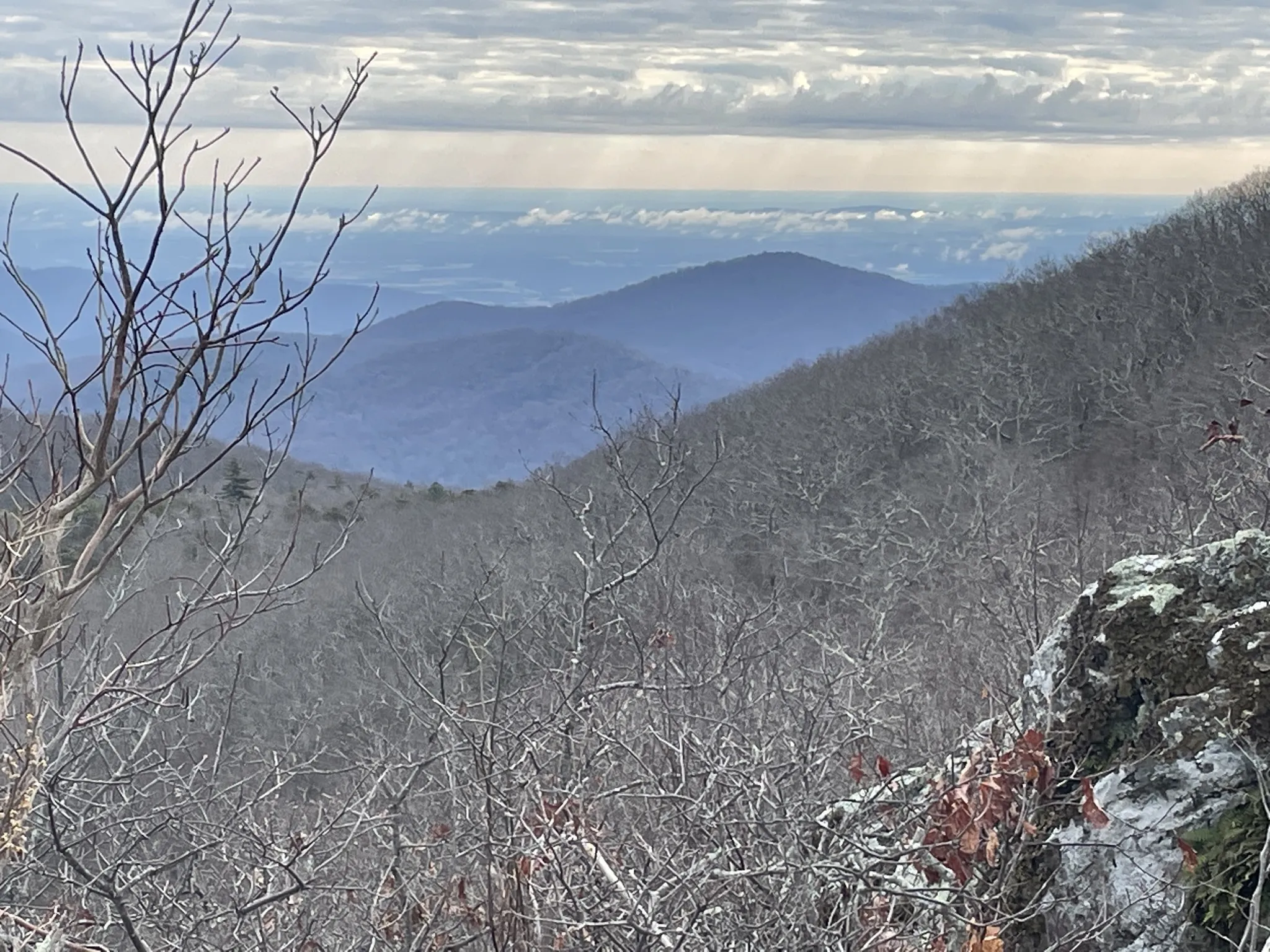
Nestled in the expansive Shenandoah National Park, with its 200,000 acres of wilderness, Bearfence Mountain Trail offers an exclusive VIP pass to nature’s best show, no ticket required. This trail is not just a walk; it’s a 1-mile journey where you’ll scramble over rocks like a pro climber (even if you’re more of a couch potato). The summit rewards you with a 360-degree view that’s so breathtaking, it’ll make your social media followers green with envy.
As for the local celebrities, you might bump into deer so majestic they could star in their own nature documentary, black bears that are the original influencers of the park (no autographs, please), and birds that chirp the original hit songs of the forest. With over 500 miles of trails, Shenandoah is your oyster, and Bearfence Mountain is the pearl. So, lace up your boots for an adventure where the wildlife is as unscripted as it gets, and the views are always five stars.
Best Time to Visit: Fall, spring, or early summer to avoid extreme weather and crowds.
Essential Gear: Shoes with good traction for the scramble.
Common Dangers:
7. Mount Marcy, NY
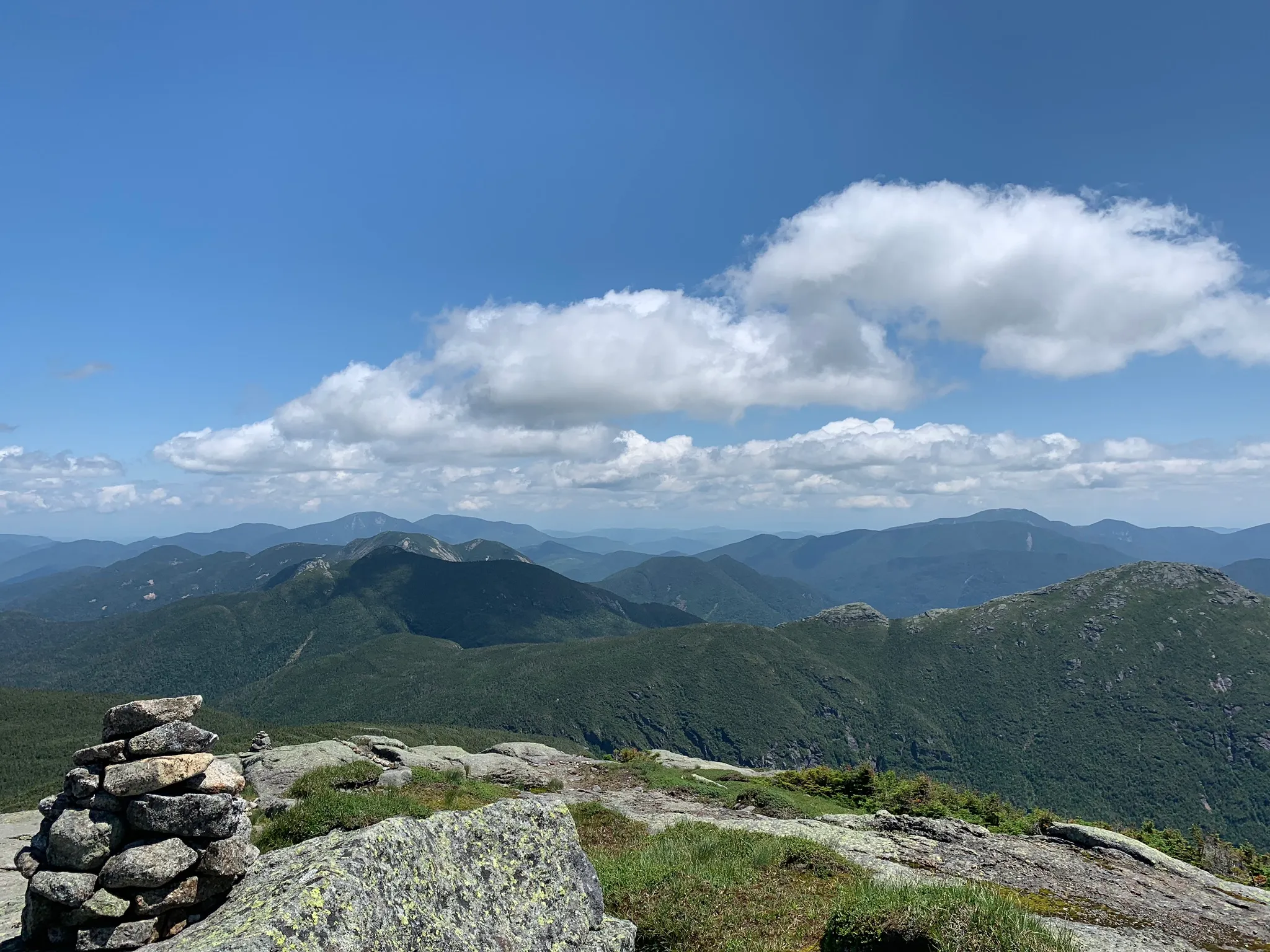
Mount Marcy, NY, sits nestled within the Shenandoah National Park and stands as the Empire State’s loftiest peak, where hikers earn bragging rights just by whispering its name. This behemoth of nature offers trails that meander through wilderness so raw, you’ll forget what a smartphone looks like. Wildlife ranges from the stealthy black bear, playing hide and seek, to the majestic moose, strutting its stuff like it owns the place. With over 190 resident and transient Bird species, prepare to be serenaded with tunes that no Spotify playlist can match. With vistas that could make an eagle jealous, Mount Marcy is more than a hike; it’s a pilgrimage for those who speak fluent wilderness.
With breathtaking views for those willing to make the 14.8-mile round-trip journey, Mount Macy boasts an elevation gain of 3,166 feet. Hikers can choose to traverse water crossings, climb steep rock slabs, and hike through multiple trail junctions based on the Van Hoevenberg trail, providing a true test of endurance and spirit. Shenandoah National Park itself, where this titan resides, sprawls over 200,000 acres, featuring over 500 miles of trails that weave through diverse ecosystems, offering adventurers countless opportunities to explore the natural beauty, encounter wildlife like deer, bears, and a symphony of bird species, and lose themselves (figuratively, we hope) in the wilderness.
Best Time to Visit: Late spring through fall for the best hiking conditions.
Essential Gear: Water bottles, snacks, and layers for varying altitudes.
Common Dangers:
These trails offer a diverse experience from serene walks to challenging climbs and are suitable for a wide range of skill levels. And always remember, the key to an enjoyable hike is in the preparation. Always check trail conditions before you go, pack appropriately, and always respect the natural environment.
















































